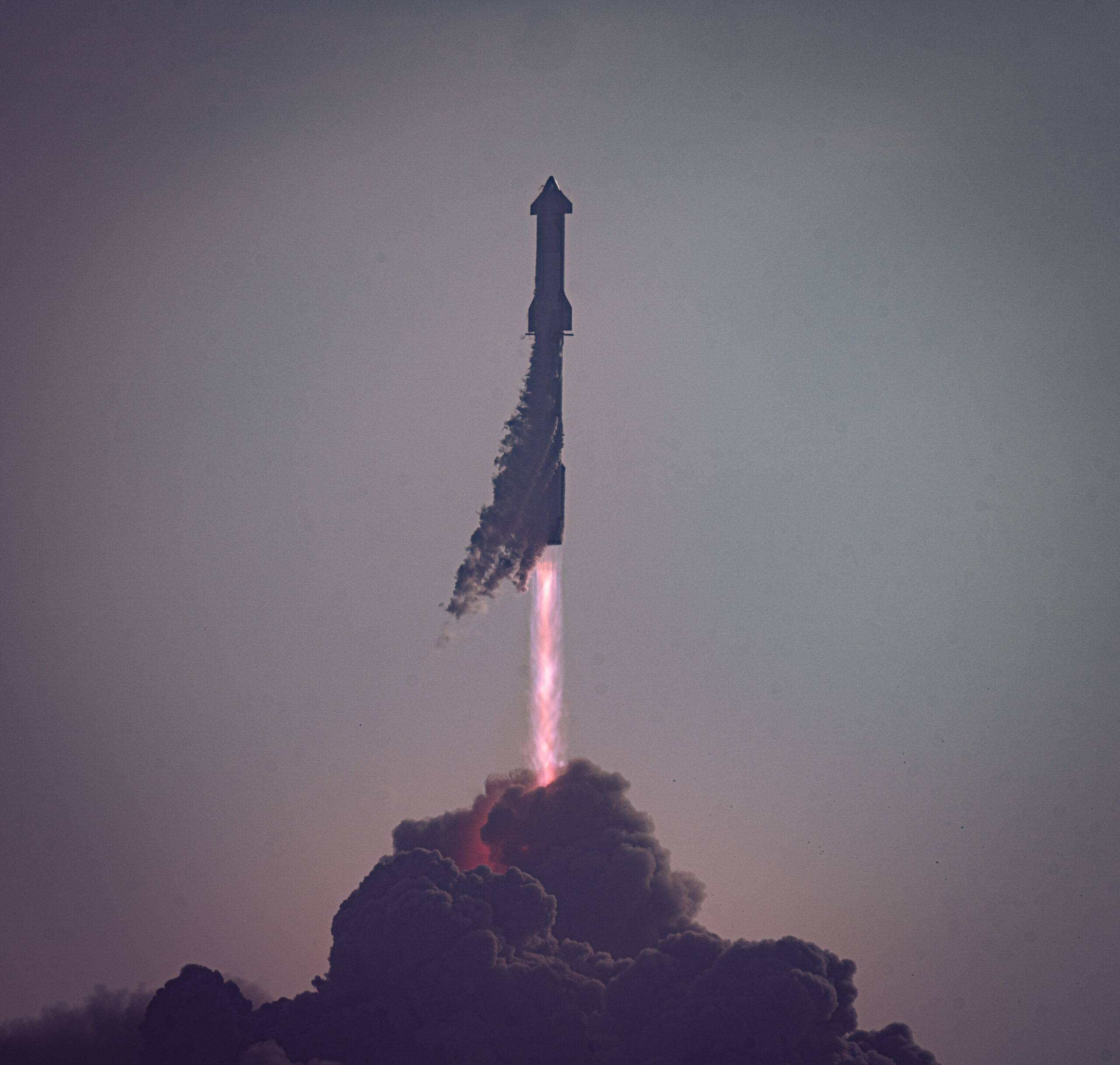Starship’s First Flight Test Ends in Explosion

Starship lifts off in its first full integrated flight test on April 20, 2023. Photo: SpaceX
SpaceX tested the complete Starship rocket for the first time on Thursday, in a highly anticipated test that ended in an explosion — yet was celebrated as a success.
This was the first integrated flight test of both the Starship spacecraft and Super Heavy booster, collectively known as Starship. It is the massive rocket designed to be fully reusable and to take both crew and cargo to Earth orbit, the Moon, and Mars, and also to deploy satellites. SpaceX has done prior tests of the Starship spacecraft.
Thursday’s test was from Starbase, the Starship development site in Boca Chica, Texas.
Starship cleared the pad about 5 seconds after liftoff, to a chorus of raucous cheers from the SpaceX team heard on the livestream.
Starship then ascended and cleared MaxQ. When it got to the point of stage separation, in which the Super Heavy booster is supposed to flip and return to Earth, the vehicle began to flip, but then spun as it tumbled through the sky before exploding.
SpaceX called the ending a “rapid unscheduled disassembly.” Although the rocket exploded mid-flight, SpaceX considers this a success. The primary objective was to gather data about the fully integrated vehicle, and it is said to be the first of many tests.
“Everything after clearing the tower was icing on the cake,” SpaceX engineer Kate Tice said after the vehicle blew up during the livestream, as crowds could be heard cheering in the background.
According to the tracker on the livestream, the vehicle reached an altitude of 39 km, and top speed of more than 2,100 km/hr.
The livestream also showed a graphic of which engines were ignited, and it looked like three either never ignited or failed soon after ignition, and a number of others stopped firing during the test.
Elon Musk congratulated the team and said SpaceX “learned a lot” ahead of the next test launch in a few months.
The first Starship launch is part of a trend of launch providers calling failures successes amid a lack of launch supply, commented Dallas Kasaboski, an analyst for NSR, an Analysys Mason company.
“A rocket exploded, everyone cheered, and the industry fails forward. As exciting as it was, there is a clear trend of launch providers calling failures successes,” Kasaboski tweeted, citing launches from Firefly, Relativity Space, and Astra that failed to achieve their full objectives but were still characterized as successes.
“The industry needs to ask itself: What is a rocket launch? What makes it successful?” he asked. “Launch is the bottleneck, and the industry is so hungry for launch access that it will do anything to move forward, even support tremendous amounts of failure. Is that sustainable?”
SpaceX received industry commendations applauding the test.
NASA Administrator Bill Nelson tweeted a congratulations: “Every great achievement throughout history has demanded some level of calculated risk, because with great risk comes great reward. Looking forward to all that SpaceX learns, to the next flight test — and beyond.”
NASA has awarded SpaceX billions of dollars in contracts for Starship to take astronauts to the Moon in its Artemis program.
The American Institute of Aeronautics and Astronautics (AIAA) issued a statement as well. “With Starship, SpaceX is taking bold steps that are helping us accelerate the future of humans living and working off our planet. Flight tests and taking risks will lead to this future,” commented AIAA Executive Director Dan Dumbacher. “We are excited to see commercial space launch companies pushing the industry forward toward the moon and Mars. Pushing boundaries leads to success.”